The Portrait of Bach That Was Lost In World War Two -
An Authentic "Alternative" to the Haussmann Image of Johann Sebastian Bach in his early 60s Pages
at
The Face Of Bach
Page 3 - The Provenance and the History of the Berlin Portrait Become a Matter of Great Importance!
The Face Of Bach
This remarkable photograph is not a computer generated composite; the original of the Weydenhammer Portrait Fragment, all that
remains of the portrait of Johann Sebastian Bach that belonged to his pupil Johann Christian Kittel, is resting gently on the surface
of the original of the 1748 Elias Gottlob Haussmann Portrait of Johann Sebastian Bach.
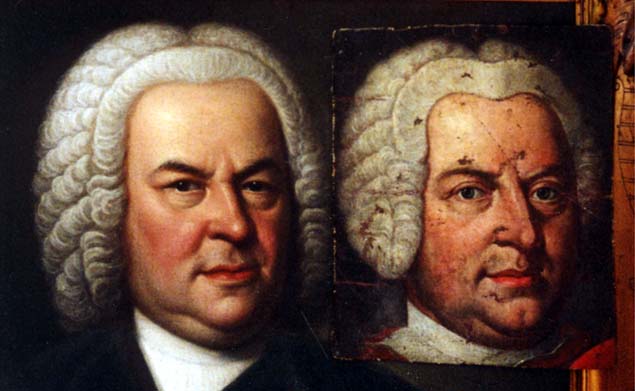
1748 Elias Gottlob Haussmann Portrait, Courtesy of William H. Scheide, Princeton, New Jersey
Weydenhammer Portrait Fragment, ca. 1733, Artist Unknown, Courtesy of the Weydenhammer Descendants
Photograph by Teri Noel Towe
©Teri Noel Towe, 2001, All Rights Reserved
The Portrait of Bach That Was Lost In World War Two
An Authentic "Alternative" to the Haussmann Image
of Johann Sebastian Bach in his early 60s
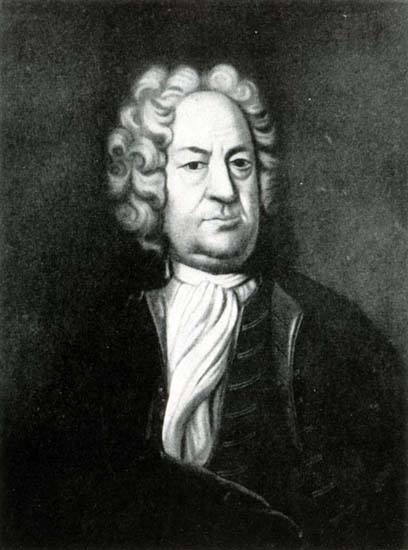
Page 3
The Provenance and the History of the Berlin Portrait Become a Matter of
Great Importance!

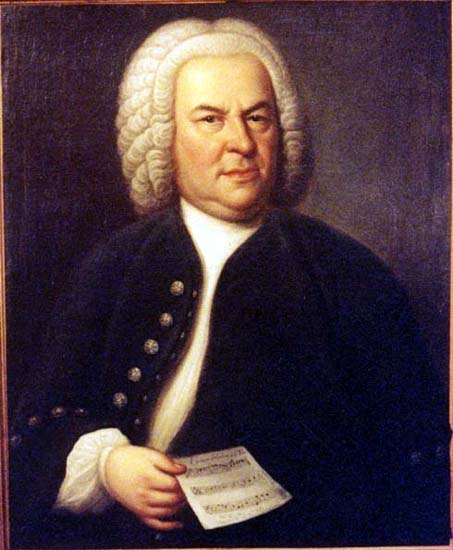
The astounding realization that the Berlin Portrait almost certainly was a portrait from life of Johann Sebastian Bach that was
contemporaneous with the Haussmann Portraits, particularly the 1748 version, compels a particularly through scrutiny of the
provenance of the painting and a careful evaluation of the image to see if there are any other clues that might provide collateral,
circumstantial evidence that it, in fact, does depict Johann Sebastan Bach, as the physiognomical comparison indicates.
Provenance and history first:
It comes as no surprise that our principal source for what little information there is about the provenance and history of the Berlin
Portrait turns out to be Heinrich Besseler, who discusses the painting in at least three different venues. He wrote about the painting
in both the 1956 and the 1959 issues of the Bach Jahrbuch, but he goes into the greatest detail in his account of the picture in his
controversial and flawed but undeniably important monograph on the Bach portraits, Fünf Echte Bildnisse Johann Sebastian
Bachs (Cassel, 1956), 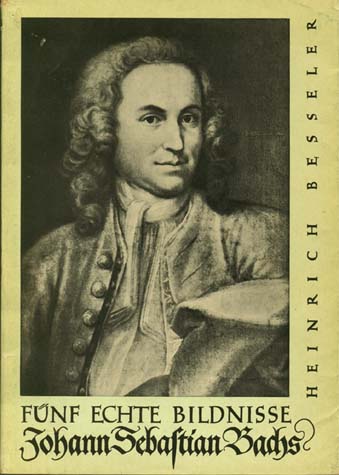 .
.
In a nutshell, the painting was first spotted in the window of a minor antique dealer's shop in Berlin, in 1939, by Manfred Gorke, a
Bach scholar, whose impressive collection of Bach autographs, early copies, early editions, and Bachaina is now a part of the Bach
Archiv in Leipzig. It is unclear if Gorke acquired the Berlin Portrait himself or bought it in partnership with Helmut Meyer, the
proprietor of the then prominent Berlin art dealership, Kunsthandlung Meyer & Ernst, but after independent evaluation by Herr Prof.
Dr. Georg Schünemann, the erstwhile Director of the Music Division of the Berlin State Library, who confirmed that the painting
was Bach, in original condition, and in the original frame, Meyer offered the painting in his 1941 catalogue, at a price of 2500 RM.
The unidentified purchaser came from the Ruhr Valley, and, as I remarked earlier, the painting appears to have been destroyed in
the air raids in 1945.
On the surface, the provenance of the Berlin Portrait not only sounds impressive but also appears unimpeachable. Alas, neither Herr
Gorke nor Herr Prof. Dr. Schünemann has an especially good track record when it comes to the authentication of composer
portraits. Herr Prof. Dr. Schünemann was widely known for having authenticated both the portrait of Bartolomeo Cristofori and the
miniature purported to depict the composer Heinrich Schütz at the age of 85. I am not familiar with the details of the authentication
of the portrait of Cristofori 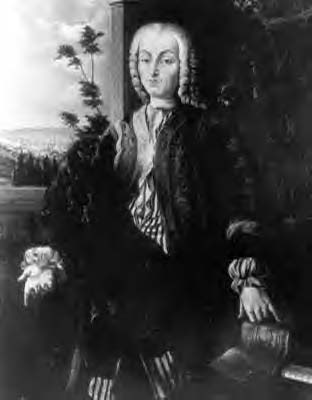 , although I intend to investigate the matter for obvious
reasons, but I do know that Herr Prof. Dr. Schünemann, it is now known, was taken in completely by the portrait miniature alleged
to depict Heinrich Schütz as a man of 85,
, although I intend to investigate the matter for obvious
reasons, but I do know that Herr Prof. Dr. Schünemann, it is now known, was taken in completely by the portrait miniature alleged
to depict Heinrich Schütz as a man of 85, 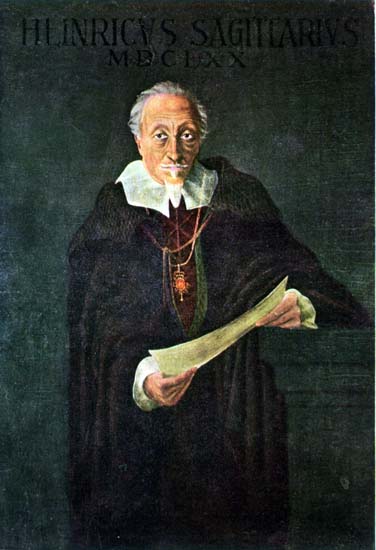 , a portrait that now is known to be a
canny fake, fabricated by a cunning and knowledgeable forger, a forger who had studied the authentic Schütz portraits especially
well.
, a portrait that now is known to be a
canny fake, fabricated by a cunning and knowledgeable forger, a forger who had studied the authentic Schütz portraits especially
well.
Herr Gorke, whose many valuable and important contributions to Bach scholarship I intend in no way to disparage, was
nonetheless also responsible for the "discovery" of the painting that was presented to the world as a portrait of Bach that had been
painted by Haussmann in 1723, shortly after Bach's arrival in Leipzig. After Gorke found the painting about 1930, the portrait, much
restored and heavily overpainted, made its way to the United States, and it was the subject of an article by Gerhard Herz in Musical
Quarterly in 1943 (Vol. 29, pp. 225-241). The legendary, the redoubtable, and the utterly formidable Arthur Mendel and his equally
knowledgeable and forceful colleague Hans Theodore David, the co-Editors of The Bach Reader, were persuaded to use this then
recently rediscovered image as the frontispiece for the first edtion of the legendary and indispensable anthology The Bach Reader,
now The New Bach Reader.
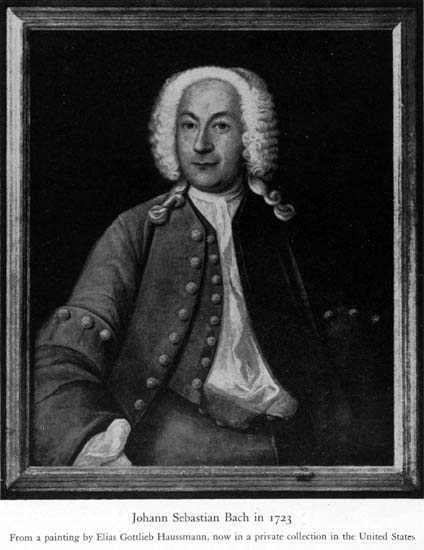
The authenticity of the portrait as a work of Haussmann and its accuracy as a depiction of the facial features of Johann Sebastian
Bach have both long since been thoroughly discredited, to the subsequent embarrassment of many, but how anyone could have
given serious credence to the identification of the subject as Johann Sebastian Bach baffles me completely. At the age of eleven I
even said to myself, "He doesn't look like Bach." As my dentist recently has confirmed, the man in the "Gorke-Haussmann Portrait"
had a significant overbite. My knowledge of the affair is both anecdotal and "scholarly". Eventually the details of the whole sorry
business became public knowledge. The best bald statement of the circumstances, comes, ironically enough, from Gerhard Herz,
who first announced the discovery of the painting to the world, on page 177 of his invaluable Bach Sources in America, which was
published in 1985.
While neither Herr Gorke nor Herr Prof. Dr. Schünemann has an unblemished track record, at least when it comes to forensic
iconography and, in Herr Gorke's case, integrity, the reputation of the art gallery, Meyer & Ernst, appears to have been one of the
highest integrity, but, once again, more research needs to be undertaken.
Please click on  to go on to Page 4.
to go on to Page 4.
Please click on  to return to the Index Page at The Face Of Bach.
to return to the Index Page at The Face Of Bach.
Please click on  to visit the Johann Sebastian Bach Index Page at Teri Noel Towe's Homepages.
to visit the Johann Sebastian Bach Index Page at Teri Noel Towe's Homepages.
Please click on the 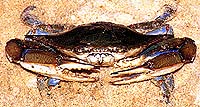 to visit the Teri Noel Towe Welcome Page.
to visit the Teri Noel Towe Welcome Page.
TheFaceOfBach@aol.com
Copyright, Teri Noel Towe, 2000 , 2002
Unless otherwise credited, all images of the Weydenhammer Portrait: Copyright, The Weydenhammer Descendants, 2000
All Rights Reserved
The Face Of Bach is a PPP Free Early Music website.

The Face Of Bach has received the HIP Woolly Mammoth Stamp of Approval from The HIP-ocrisy Home Page.